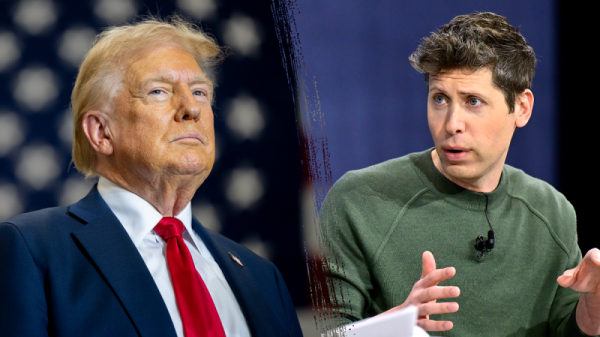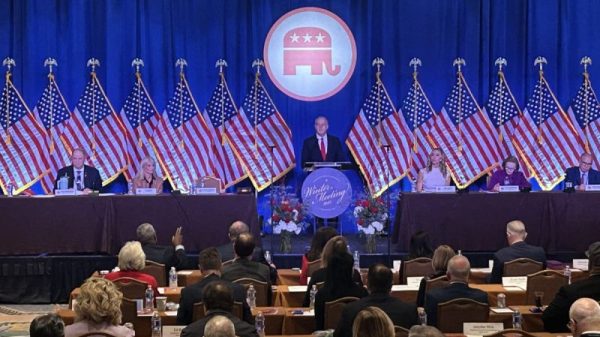Passing the so-called Social Security Fairness Act sends a clear message about how Washington approaches Social Security reform—and it’s a disturbing one. Congress and President Biden have chosen to ignore all expert advice, cater to organized special interest groups, and burden younger taxpayers with increasingly unaffordable costs.
This decision foreshadows likely future actions as Social Security’s trust-fund-related borrowing authority will run out around 2032. Instead of sensible policy reforms that better align Social Security benefits with the ability of workers to pay for them, Congress will want to take the path of least resistance. Without significant public pressure to do the right thing, expect a multi-trillion-dollar general revenue transfer (meaning added borrowing) come trust fund depletion, and perhaps superficial fixes like the federal government borrowing money today to ‘invest’ to generate revenue from speculative gains tomorrow.
We need to send a clear message to Washington: stop the superficial quick fixes and solve the real entitlement spending challenge.
Popularity Trumps Responsibility
Public choice theory helps explain why Congress prioritizes the demands of well-organized interest groups over the recommendations of policy experts. Politicians are incentivized to back proposals that offer visible and immediate benefits to vocal constituencies, even if they impose long-term costs on the broader public. The Social Security Fairness Act’s supporters—public-sector workers and their well-funded unions—pushed hard to fix what they claimed were unfair benefit cuts. Their voices were loud, their cause easy to understand, and their political influence significant. This is a winning combination in politics, even if the changes create unfair outcomes or worsen federal finances.
The Social Security Fairness Act increases the program’s financing gap yet further. Funding this policy with additional payroll taxes would burden 180 million workers with an additional $68 in annual taxes to fund higher benefits for 3 million public sector workers and their spouses by unfairly manipulating the Social Security benefit formula to their advantage. This is a textbook example of Mancur Olson’s theory of collective action, where small, concentrated groups secure disproportionate benefits at the expense of a diffuse majority.
The repeal of the Windfall Elimination Provision and Government Pension Offset creates outsized benefits for workers who had significant earnings that were exempt from payroll taxes compared to those who paid Social Security taxes over their entire careers. For example, economist Larry Kotlikoff highlights a schoolteacher whose lifetime benefits will soar by $830,625 (!) under this law, with her annual retirement benefit more than doubling and her widow’s benefit nearly tripling. Similarly, actuary Elizabeth Bauer calculates that public-sector workers with only brief private-sector employment will receive benefits that are 45 percent higher than those with identical earnings histories who paid into Social Security throughout their careers.
Congressional Republicans’ support for this expensive change likely stems from a political calculation. For a long time, backing the bill seemed like a low-cost way to curry favor with police and firefighter unions, key constituents in many members’ voter base without serious worry that the bill would pass. It took 24 years from when a version of the Social Security Fairness Act was first introduced in 2001 (with a congressional hearing held in 2003) to it being signed by President Biden on January 5, 2025. The Wall Street Journal suggests the timing—a post-election passage—points to a political payoff for groups like the International Association of Fire Fighters, which lobbied heavily for the measure and declined to endorse Kamala Harris for president (after endorsing Joe Biden in 2020).
It didn’t help that the windfall elimination and government pension offset provisions were complex policy adjustments applied to an even more complex Social Security benefit formula that few people understand in great depth. As Andrew Biggs argued in his Substack:
The typical Member of Congress doesn’t understand very well how Social Security works. If they did, the Social Security Fairness Act wouldn’t have come close to passing.
The hard truth is that Social Security’s formulas and finances are a mess. Fixing them means making tough choices—like raising taxes or reducing benefits. Those are unpopular changes, and politicians don’t want to make them. Voters do not wish to be confronted with trade-offs. Everyone likes a free lunch, even if those do not exist. Instead, politicians have demonstrated once again that the surest way to gain bipartisan support for a measure is to bestow immediate benefits on current constituents while passing the buck to the next generation in the form of higher debt.
What This Means for the Future of Social Security Reform
The Social Security Fairness Act shows how hard real, comprehensive reform will be. If Congress can’t say no to popular and shortsighted benefit increases, how will it tackle the tougher job of making Social Security long-term solvent? The sad truth is that politicians probably won’t even try—at least not until the crisis is too close to ignore.
That’s the real danger. By delaying sensible policy reforms now, lawmakers are setting the stage for even more drastic measures down the road. A general revenue transfer or gimmicks like pre-borrowing against speculative gains become the most likely quick fixes that Congress will grasp when automatic benefit cuts loom in 2032.
- A general revenue transfer means that Congress might decide to no longer limit Social Security’s funding to its dedicated revenue sources but to open the government spending and borrowing spigot wide open. While Social Security has been primarily funded by payroll taxes, it faces a $25 trillion shortfall over the next 75 years—after taxpayers have repaid the payroll tax surpluses that previous Congress squandered, with interest. The program won’t have enough money incoming to pay all the promised benefits around 2032. A general revenue transfer is a way of kicking the can down the road, with future taxpayers left to pick up the can, and then some. Basically, Congress would simply tell the Treasury to keep selling bonds to finance Social Security benefits, even after the so-called trust fund is depleted.
- The speculative gains idea originates with Senator Bill Cassidy (R‑LA), who proposed creating a separate $1.5 trillion investment fund to shore up Social Security by investing in private equity markets. Basically, the government would borrow $1.5 trillion to purchase stocks currently owned by Americans and other investors, leaving future taxpayers to repay that debt while any stock gains would flow to the government. Over 75 years, this could lead to the federal government owning one-third of the stock market, according to Andrew Biggs, raising concerns about corporate governance and the government using its stock market position to engage in politically-driven social investing.
Social Security needs comprehensive reform, not more kicking the can. Social Security’s financing challenge isn’t just a money issue, either—it’s a generational betrayal that will fall hardest on those who can least afford it. As Congress keeps showering the older generation with unfunded benefits, younger generations confront a bleaker future, saddled with higher taxes and a slower economy dragged down by excessive government debt.
Congress listens to the loudest voices. That’s why it’s crucial for taxpayers and advocates of limited government and sustainable Social Security reform to get organized now and counter the ingrained tendency to keep benefits flowing while kicking the financing can. If we don’t raise our voices, politicians will keep caving to beneficiary interest groups, until a fiscal crisis kicks back.































